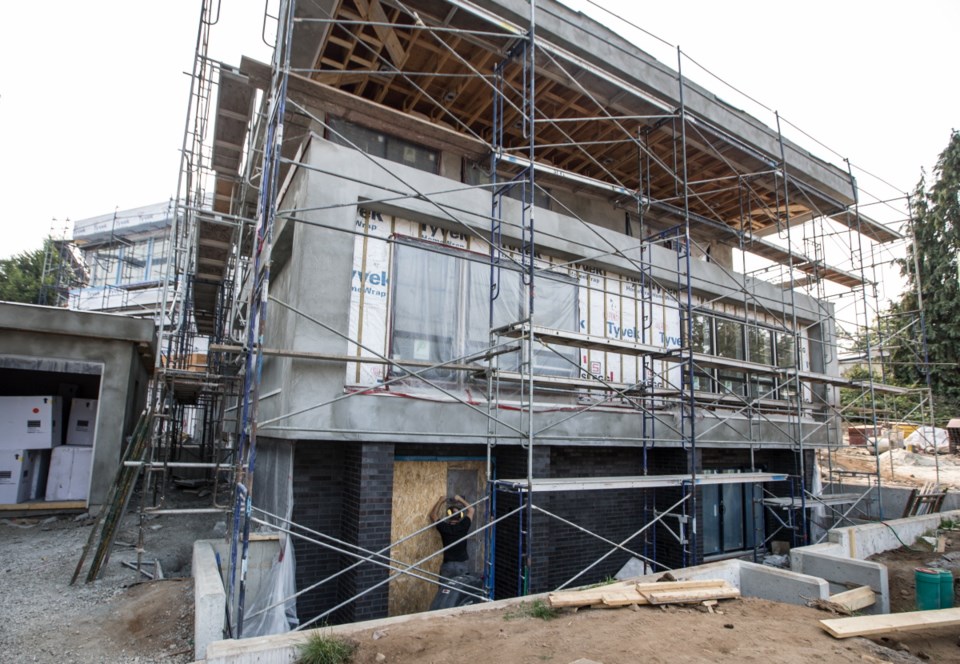The Capital Regional District is polling the construction industry to determine if it’s ready for a change to the provincial building code.
The CRD is doing a survey on behalf of the region’s municipalities to get feedback from builders on how ready they are for the B.C. Energy Step Code, and to determine what support may be needed to implement the change.
The Step Code is an amendment to the B.C. Building Code announced this year. Local governments around B.C. are exploring options to support its adoption and address gaps in their current building energy policies.
The survey will continue online until Sept. 15.
A quick check suggests the code will be met with serious reservations by home builders in Greater Victoria, who have already pointed out to the province that the code, which will be introduced in stages starting this winter, could add as much as $80,000 to the price of a new home.
The Step Code, introduced by the B.C. Liberal government in April, undermines the province’s existing code standards and can put consumers at risk, said Casey Edge, executive director of the Victoria Residential Builders Association.
Edge said implementation of the new code is a problem.
“The goal of achieving greater energy efficiency is achievable, but must be done responsibly, affordably and protect consumers from unintended consequences,” Edge wrote in a letter to Premier John Horgan in July.
The new code is designed to reduce the number of air changes — the number of times a home needs to be heated per hour.
But Edge said because it only targets new builds, which are already being built with energy efficiency in mind, there’s a lot of added cost without a lot of benefit. “For an additional $26,000 [on the cost of building an average Victoria home] you get to knock off half an air change, for an additional $58,000 you can knock off two air changes compared to what we can do now,” he said in an interview.
Edge said the additional cost is likely to be wrapped into a mortgage and therefore will end up costing home buyers a lot more over the years.
“In some cases they’ll never get their money back,” Edge said, noting the energy savings are unlikely to balance off the added expense. Edge said the Victoria Residential Builders Association is instead suggesting a staggered implementation of the code and floating the idea of renovation tax credits for those with older homes.
“It encourages people to retrofit homes, and you’ll exponentially save more air changes per hour instead of doing this,” he said. Older homes with no insulation can have as many as 40 air changes per hour, Edge added.
The association has also suggested starting the Step Code at Tier 2, basically the equivalent of the existing building standard, and after establishing new training guidelines add more stringent tiers in five-year increments.
“This achieves the province’s goal of net-zero housing by 2032 affordably and responsibly and without undermining a code standard,” he said.
As initially proposed the Step Code would allow each of the province’s 162 municipalities a choice of which tier of the code to adopt.
“This implementation creates confusion, multiple building practices, undermines a uniform code and deviates from B.C.’s agreement with Ottawa to harmonize with the National Building Code,” Edge said in his letter to the premier.
Veteran builder Ron Bickford said the industry is not against energy efficiency, but with the price of materials increasing and the scarcity of labour during a building boom already driving up prices, the addition of the Step Code makes building affordably almost impossible.
“It may drive costs up as much as $100,000,” he said. “And it means training.”
That means delays and added costs as well.
As for the CRD’s survey, Edge was less than supportive.
“Will municipalities send out a questionnaire to engineers asking about their qualifications for the Step Code?” he asked. “When leaky condos occurred, there was engineering oversight required on the condo buildings. In addition, they were inspected by municipal building inspectors. Are the municipalities doing the same diligence on their own staff?
“Municipalities are engaging in an area out of their depth and opens the door to greater liability if buildings fail.”
Edge asked why municipalities would be trying to “gauge the education and competence of the building industry” when the B.C. Building Code is the responsibility of the province.
According to a Ministry of Municipal Affairs and Housing spokesperson, the NDP government is not ready to comment on the code because it is still getting up to speed on the issue.



